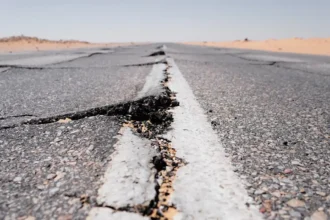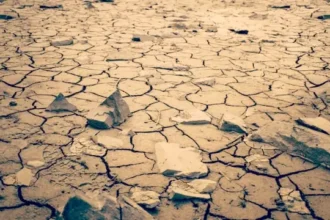The scorching heat in Odisha is doing more than making people uncomfortable – it’s actually cracking buildings. According to OdishaTV, a severe heatwave in April 2025 with temperatures above 40°C is causing serious damage to buildings and city structures. Experts in construction and city planning are warning that this extreme heat could weaken buildings over time if nothing is done.
How Hot Is It Really?
The temperatures have reached dangerous levels in many parts of Odisha. The Indian Meteorological Department (IMD) has put out orange warnings telling people to be careful.
- Temperatures between 45-46°C in several districts
- Angul, Jharsuguda, and Sambalpur are the worst affected areas
- Heat has stayed consistently high throughout April 2025
How Heat Hurts Buildings
When materials get very hot, they expand (get bigger). When they cool down, they shrink back. This happens over and over during hot days and cooler nights.
| Material | How Heat Affects It |
|---|---|
| Concrete | Gets tiny cracks when it expands and contracts |
| Steel | Can bend slightly and weaken joints |
| Glass | May crack or break under extreme temperature changes |
Think of it like bending a paper clip back and forth – eventually, it breaks. The same thing happens to buildings, but much more slowly. These small damages add up over time.
Where the Damage is Happening
The worst problems are showing up in urban areas of Angul, Jharsuguda, and Sambalpur – districts where temperatures have gone above 45°C.
- Wall and ceiling cracks appearing in buildings
- Concrete surfaces showing signs of stress
- Older buildings suffering more damage than newer ones
The full picture of how bad the damage is across the whole state isn’t clear yet, as checks are still being done in early May 2025.
Looking at Past Heatwaves
Odisha has faced bad heatwaves before, but things seem to be getting worse. Climate change is making summers hotter and heatwaves more common.
| Year | Notable Facts |
|---|---|
| 1998 | Severe heatwave with many deaths |
| 2015 | Intense heat spell affected many districts |
| 2024 | Temperatures above 45°C in several areas |
| 2025 | 18-day heatwave (longest in 9 years), with Baripada reaching 46.4°C |
What’s different now is that experts are paying attention to how these high temperatures affect buildings, not just people and power supplies.
Building Better for Hot Weather
Experts say we need to change how we build things to handle these hotter temperatures. Think of it like buying a fan before summer starts – you’re getting ready for the heat before it becomes a problem.
Heat-Resistant Building Techniques
- Wider expansion joints – These are spaces left between parts of a building that allow materials to expand without causing damage
- Reflective materials – Surfaces that bounce heat away instead of absorbing it
- Natural ventilation designs – Ways to let air flow through buildings to keep them cooler
- Urban re-greening – Planting more trees and plants around buildings to provide shade and cooling
- Better concrete curing – Making sure concrete is prepared properly so it’s stronger against heat
If these changes aren’t made, buildings might need expensive repairs or could even become unsafe in the future.
What This Means for Odisha
NASA researchers who study how heat affects structures are among the experts looking at this problem. They say what’s happening in Odisha could happen in other hot places too.
The silent damage happening to buildings during these heatwaves might not be obvious right away, but could cause problems years later. It’s like a sunburn that doesn’t hurt until hours after you’ve been in the sun.
As you go about your day, you might not notice these tiny cracks forming in the buildings around you. But over time, they could mean the difference between a safe structure and one that needs major repairs.
Will your city be ready for the next big heatwave? The choices builders and planners make today will affect how safe buildings are for many years to come.











